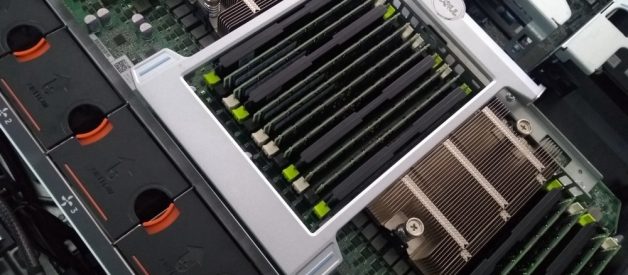by Bradley Nice, Content Manager at ClickHelp.com ? online documentation tool
I?m continuing debunking common misconceptions, and this time I wanted to talk about RAM.

RAM, or random-access memory, is a kind of computer data storage, but it?s quite different from hard disks or DVD. It?s kind of like our short-term memory: it temporarily stores some information that your PC/Console/Phone needs right now or thinks will need soon, so it can access that data at an instant, rather than searching for it on your HDD.
Now that we?ve covered the basics (I assume you already knew all this, but just to be sure?), let?s get onto the myths about RAM.
1. ?My RAM is never full, so I don?t need more ram?
As Bill Gates allegedly said (though he denies it, quote still floats around like a rumor), ? 640K is more memory than anyone will ever need?. When asked about this, he replied, that ?no one involved in computers would ever say that a certain amount of memory is enough for all time.? And this, in fact, is very true. And we?re not talking about whether you have enough RAM for the next 10 years, but about this very moment.
There?s an oversimplified example that everyone can understand. Every app has a minimum amount of RAM it needs to function, but what about the maximum? Quite often, maximum amount of RAM needed for a certain app is not expressed in mega/gigabytes, but rather in % of total RAM available. So, if you have 4Gb RAM, and some app?s max usage is 10%, it can use up to ~410Mb, and if you have 8Gb, this will double the amount of memory available for an app ? up to 820Mb. So theoretically, increasing RAM size can benefit performance.
So how much RAM do you actually need? It totally depends on what you do on your PC and what apps you use. If you use your computer only for internet browsing and working with documents (MS Office, for example), the minimum required amount for Win 10 users will be 4Gb, but it?s better to have 8Gb ? because modern browsers can be quite hungry for RAM (hello, Chrome), and Windows uses some amount as well.If you use heavy apps for video/graphic/sound editing, like Photoshop, After Effects, etc. or a gamer ? the minimum required amount goes up to 8Gb, recommended ? to 16Gb and beyond.
2. RAM size is all that matters
You might?ve guessed that this is the same case as with CPU clock rate -not true. There are several things that affect RAM performance, and besides its size, there is another important parameter ? RAM speed (or frequency).
What will benefit you more ? bigger RAM size or higher frequency again depends on the usage. If, while using the heaviest app on your PC, your RAM is half full, then you might not need to increase the size. If you want to squeeze more performance out of the same amount (which is sufficient for you), you might switch for the stick with higher frequency.
3. You can?t add RAM of different sizes (frequencies/models/etc.)
Of course, it?s highly advisable that you use RAM sticks of the same manufacturer, lineup, size, and frequency ? but it?s only to reduce the chance that problems may arise. In practice, you can very well use different models, sizes and frequencies on RAM sticks, but there are few things to look out for:
- They should ideally have the same voltage and their respective controllers should be compatible with each other and with the motherboard. Yes, there may be compatibility problems ? they always can happen, so better just try to use sticks from the same manufacturer, it will reduce the chance of it happening.
- If you install two RAM sticks of different frequencies, both of them will be working on the lowest frequency. So, if you Installed one stick with 1600Mhz and other with 2400Mhz, the latter will work on 1600Mhz, thus lowering its efficiency.
4. You can?t install an odd number of sticks
Very few (mostly dirt cheap models) motherboards have only one RAM slot available. Most of them have 2, 4 or 8 ? an even number. But what if you tried installing 3 sticks into a 4-slot motherboard? Will your PC explode? No, it won?t. And, potentially, it will perform better than before, when it had 2 sticks (adding another 4Gb stick to my 2x4Gb setup actually helped).
Motherboards have memory slots separated in two channels, usually in pairs of two. When sticks are installed in corresponding slots, they work as dual channel DDR. This could theoretically double the bandwidth, but only gives about 20 to 50 percent on Intel and little less on AMD rigs [source]. So what happens when you add third stick?
The third stick, which is working as a single channel DDR, will work slightly less efficient than each of other two sticks, that work in dual channel. Aaaand that?s it. So you lose a bit in stick performance, but you gain overall PC performance, so it?s kind of a fair trade-off. A similar thing happens when you install differently sized sticks. Adding an 8Gb stick to 4Gb stick will make both sticks work in dual channel mode, but only as two 4Gb sticks. The remaining 4Gb of the second stick will work in a single channel.
4. Empty RAM ? good RAM!
If you used Android, you might?ve seen ?Ram booster? or ?Memory cleaner? or something like that. You probably saw these apps for Windows as well. Why would anyone want to clean their ram, unloading apps and processes from it?
Well, it comes from misunderstanding the concept of RAM and how this works. People think that RAM is a data storage (yes, this is correct) and that it works the same way other data storages, like HDD. So if it?s full, then it must be bad and they need to clean it.
In fact, it should be vice versa ? RAM need not be empty. If it?s empty, then it?s not doing its main task ? storing data for quick access. And, by removing something from memory (?cleaning? it), you might actually slow down device?s performance. Another oversimplified example. If you open Word 5 times an hour, Windows thinks that you might need it very soon, so it loads Word?s data into RAM. With this scenario, next Word startup will take, let?s say, 5 seconds. But if you delete Word?s data from RAM, next startup can take two or three times longer! Yes, it?s a very crude example, but a very vivid one, I believe. Basically, OS stores data it needs or it thinks it will need soon in RAM, so why would you remove it from there?
In most cases, Windows (and other OS) has pretty good RAM management and can take care of themselves ? freeing it up for heavier apps when needed and taking it up with small apps when you don?t use it excessively.
Of course, this matter is pretty complex and there are people and articles that will explain this to you in greater detail, but I?m just trying to provide kind of oversimplified examples to make all this concept understandable even by people who are not into tech stuff.
Have a nice day!
Bradley Nice,Content Manager at ClickHelp.com ? best online documentation tool for SaaS vendors




